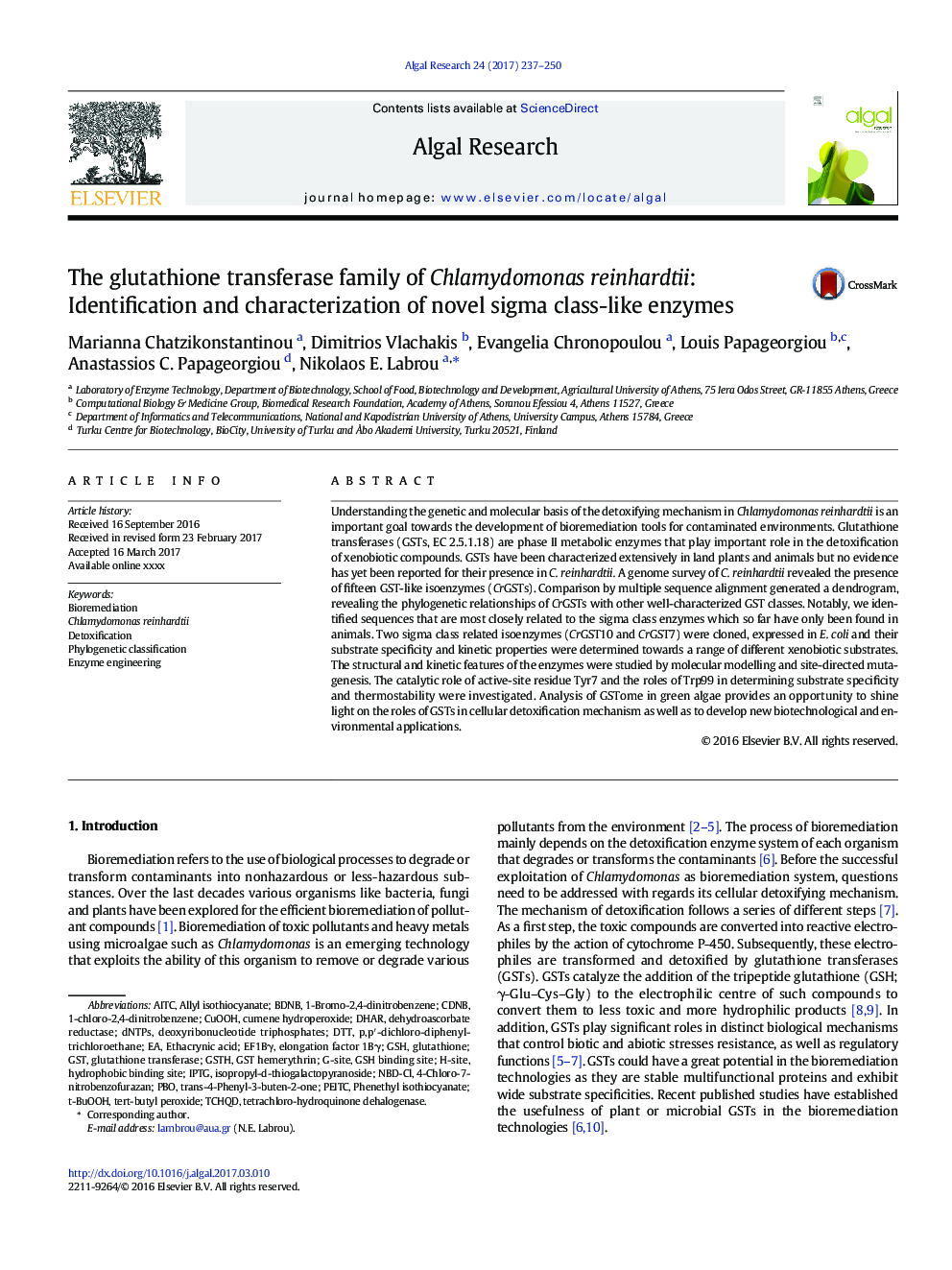| Article ID | Journal | Published Year | Pages | File Type |
|---|---|---|---|---|
| 5478444 | Algal Research | 2017 | 14 Pages |
Abstract
Understanding the genetic and molecular basis of the detoxifying mechanism in Chlamydomonas reinhardtii is an important goal towards the development of bioremediation tools for contaminated environments. Glutathione transferases (GSTs, EC 2.5.1.18) are phase II metabolic enzymes that play important role in the detoxification of xenobiotic compounds. GSTs have been characterized extensively in land plants and animals but no evidence has yet been reported for their presence in C. reinhardtii. A genome survey of C. reinhardtii revealed the presence of fifteen GST-like isoenzymes (CrGSTs). Comparison by multiple sequence alignment generated a dendrogram, revealing the phylogenetic relationships of CrGSTs with other well-characterized GST classes. Notably, we identified sequences that are most closely related to the sigma class enzymes which so far have only been found in animals. Two sigma class related isoenzymes (CrGST10 and CrGST7) were cloned, expressed in E. coli and their substrate specificity and kinetic properties were determined towards a range of different xenobiotic substrates. The structural and kinetic features of the enzymes were studied by molecular modelling and site-directed mutagenesis. The catalytic role of active-site residue Tyr7 and the roles of Trp99 in determining substrate specificity and thermostability were investigated. Analysis of GSTome in green algae provides an opportunity to shine light on the roles of GSTs in cellular detoxification mechanism as well as to develop new biotechnological and environmental applications.
Keywords
CDNBPEITCH-siteisopropyl-d-thiogalactopyranosideAITCChlamydomonas reinhardtiiPBOdehydroascorbate reductaseDHARGSTGSHDTTIPTGCuOOH1-chloro-2,4-dinitrobenzene4-Chloro-7-nitrobenzofurazandNTPSNBD-Clt-BuOOHEthacrynic acidAllyl isothiocyanatetert-butyl peroxidedeoxyribonucleotide triphosphatesBioremediationG-siteDetoxificationPhylogenetic classificationEnzyme engineeringcumene hydroperoxidePhenethyl isothiocyanateGlutathioneGlutathione transferase
Related Topics
Physical Sciences and Engineering
Energy
Renewable Energy, Sustainability and the Environment
Authors
Marianna Chatzikonstantinou, Dimitrios Vlachakis, Evangelia Chronopoulou, Louis Papageorgiou, Anastassios C. Papageorgiou, Nikolaos E. Labrou,
